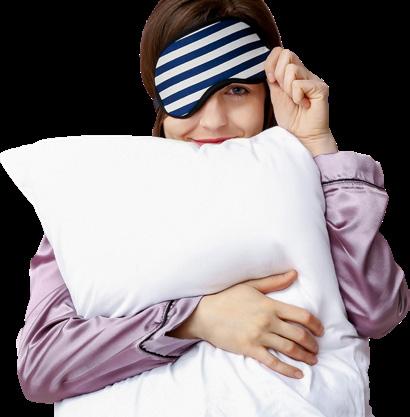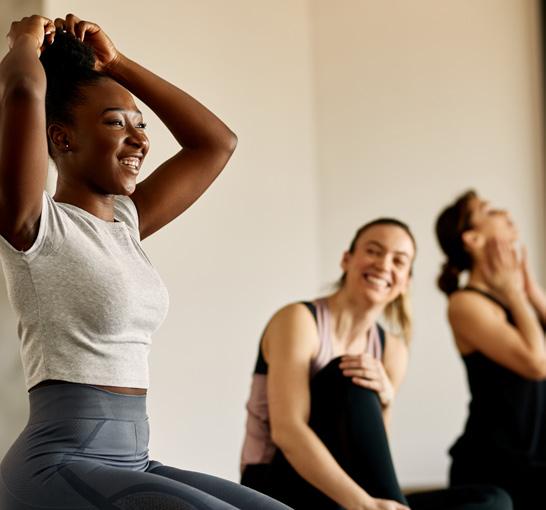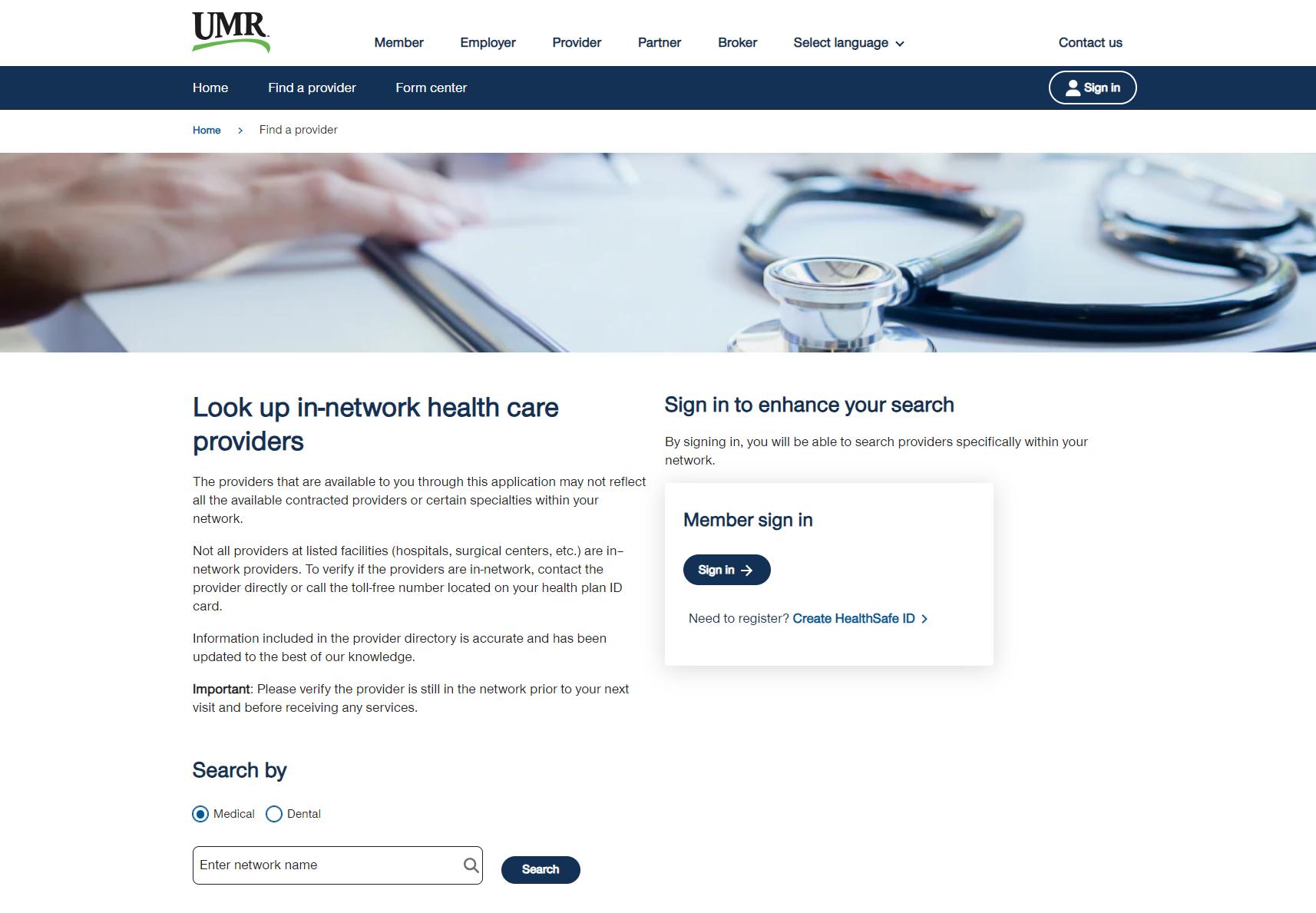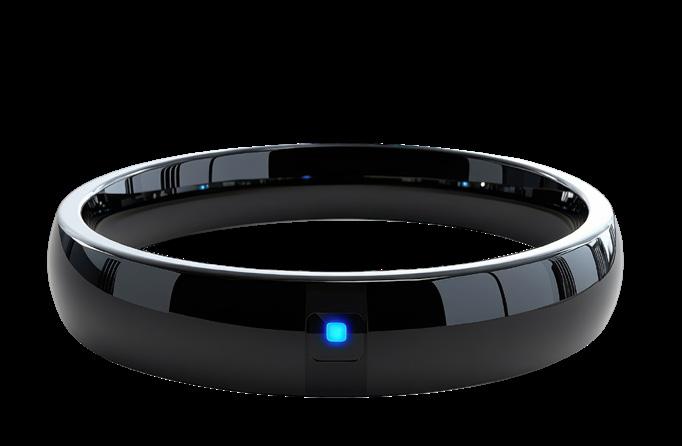Healthy You
Your guide to living well













Healthy You is an award-winning magazine featuring health and wellness articles and promoting practical tools that support and encourage healthier choices.
This educational resource for UMR members is published 4 times a year as part of our member online services and can be viewed, downloaded and shared digitally.
Healthy You is packed with helpful resources and practical recommendations to address the most common health topics, including:
• Building healthy habits
• Preventive care recommendations
• Chronic health conditions
• Exercise tips
• Nutrition and recipes
• Stress and mental health management
• First aid and getting care
• Health literacy
• Spanish-language resources

While using this electronic publication, you may click on a link to other websites. We provide links to other websites that may contain information that may be useful or interesting to you. We do not endorse, and are not responsible for, the content and accuracy of linked websites operated by third parties or for any of your dealings with such third parties. You are solely responsible for your dealings with such third parties, and we encourage you to read the terms of use and privacy policies on such third-party websites.
Available features and benefits are dependent on the products and features included in the plan design. Not all members will have access to all features shown.
Copyright © 2026 United HealthCare Services, Inc.
Reproduction in whole or part is not permitted without permission in writing from UMR. All information and links were accurate and functional at the time of publication. However, because this electronic publication contains links to third-party sites, information can change and become unavailable.
You can view and download a universally accessible version of this issue.
Kick
Learn what dental habits are right for kids at every age.
Find out how you might get a boost from the social power of group workouts.

Learn the differences between dizziness and vertigo — and ways to identify and manage each.
Get the scoop on which cooking oils you should use when — and which ones are better for you.
If your partner is interrupting your sleep, you may want to consider a sleep divorce.
out what different types of wearable fitness and health tracking devices offer.
Track all your claims in one place


Check in at your convenience to see if a claim has been processed and what you might owe. You can search the claim activity for everyone on your plan, view your claims cost summary or submit a new claim.
Check out this FREE resource.
Sign in to your member account on umr.com.
UMR on the go, right from the palm of your hand.

The UMR app has a smart fresh look, simple navigation, and faster access to your health care benefits information. View your plan details on demand — anytime, anywhere.
With a single tap, you can:
• Access your digital ID card
• See a personalized list of Things to do to stay on top of your health and keep your benefits up to date
• Look up in-network health care providers
• Find out if there’s a copay for your upcoming appointment
• View your recent medical and dental claims
• Chat, call or message the UMR member support team
• Add your health plan details to your Apple Wallet or Google Wallet

Simply scan the QR code or visit your app store to get started.
An apple a day may be healthy, but it might get boring. Here’s a goal worth savoring: Once a month (or more often), try a fruit or vegetable that’s new to you. For instance, if you love apples, give an Asian pear a try. It combines the crispness of an apple with the sweetness and juiciness of a pear. Or go exotic with a colorful dragon fruit or watermelon radish. Wander through your local farmer’s market, supermarket or international food store. You may be surprised at what you find — and taste.
new year’s resolutions you’ll enjoy keeping
It's time for everyone’s (not-so) favorite topic — new year’s resolutions. Why not try something different and create resolutions you can look forward to — things that are creative, achievable and fun. That way, you may actually do them now, and in the weeks and months to come.



No matter the size of your travel budget, you can explore a new place. Maybe there’s a park near home you’ve never visited or somewhere far away you always dreamt of going. Either way, make a plan to experience at least 1 new location this year.
Get started with these 6 ideas and kick off the year with a burst of joy.

When you’re out and about each week, look around for something that makes you smile. Maybe it’s a dog or a flower or someone you love. Snap a photo and make it your mood-booster for the week. Then take a new photo the next week, smile and repeat.
Spending too much time on screens? It’s time to get outside. Take a few minutes each day to enjoy nature and breathe in fresh air. Whether you’re in the city or country, it’s simple to embrace the trees, flowers and natural beauty all around.



Did you know that going on a walk, even a short one, can elevate your mood? Studies show that walking helps increase blood flow, which helps oxygen and nutrients move around your body. It’s an ideal way to reduce stress, increase energy and feel happier. Get started with 30-minute walks, or 3 10-minute walks, 3+ times a week.
Why wait for your birthday or the major holidays to have a celebration? With so many fun unique holidays, you can choose a new one to observe each month. Need some inspiration?


Mark your calendar for these dates — or choose events that best suit you.
January 15 - National Hat Day
February 5 - Optimist Day
March 1 - World Compliment Day

Brush gently in circular motions

Hold brush at 45 degrees

Clean all surfaces (front, back, chewing)


for 2 minutes


Use a pea-sized amount of toothpaste

START HERE BRIGHT AND FRESH
Dental health in young children is often overlooked. Most parents thrill at the sight of the first few baby teeth showing up in their kids, but many parents don’t think about immediately implementing a dental health plan for their young ones.
One of the best ways to get your children motivated to care for their teeth throughout life is to start very young.



Dental health pros suggest caring for your child’s mouth even before teeth begin to grow. They suggest gently wiping babies’ gums with a damp washcloth in the morning after the first feeding and just before bed for the night.
Once teeth begin to come in, brush twice a day with a soft-bristled brush and plain water — no toothpaste.
For children under 2 years, talk to the doctor or dentist about the best time to start using fluoride toothpaste.
Both manual and electric toothbrushes have benefits for kids. Choose the type that will help motivate your child to not view brushing as a chore.
Not only are manual toothbrushes affordable, they also offer benefits for kids, including ease of use for little ones. They are relatively simple for small hands to control, allowing your children to learn proper brushing techniques at their own pace.
Electric toothbrushes come with benefits, also. The rotating and vibrating motions are very effective at removing debris and plaque. They might work better for kids who may struggle with the dexterity of manual brushing. Some brands also feature built-in timers, characters and even music.
The Centers for Disease Control and Prevention (CDC) recommends children visit the dentist by their first birthday to spot any signs of problems early. They also suggest talking to the dentist or pediatrician about putting fluoride varnish on children’s teeth as soon as the first tooth appears.





Introduce brushing between the ages of 2 and 3 years
After being given the “OK” to start using toothpaste, help children brush their teeth twice a day for 2 minutes. Use a soft toothbrush and a very small amount of toothpaste (about the size of a grain of rice). Teach children to spit the toothpaste out and not swallow it.

Continue the twice daily habit, and when your child has teeth that touch, help them floss once a day.


Ages 10 and older
The routine of twice daily brushing should be enforced every day, along with daily flossing. By this age, your children should be able to brush their teeth on their own, but monitoring their brushing habits will help reinforce the importance.


1. Pick the right toothbrush. The bristles should be soft, and the head should be small. Also, a thick handle is much easier for younger children to grip and maneuver.
2. Choose a toothpaste with fluoride. This is one of the most effective ways to prevent cavities.
4. Teach children to brush in gentle circles across all tooth surfaces. For best cleaning results, hold the bristles at a 45-degree angle while brushing.

3. Let your children pick their toothpaste. The flavor of kids’ toothpaste is not as minty as adult toothpaste. The more they like the flavor, the more likely they will look forward to brushing.
5. Make sure children spit toothpaste into the sink after brushing.
6. You can make brushing fun by using a favorite song. You can also take turns and let them brush your teeth. There are also brushing apps for children that help motivate them.

Most people rinse with water after brushing their teeth, but many dentists suggest not rinsing. The water will wash away the coating of fluoride that is in the toothpaste. That coating helps strengthen the teeth.


Floss removes the food and plaque between teeth, helping prevent cavities and gum disease.
Let’s take a look at 4 types of flossers:
String floss — traditional waxed floss is a go-to for most people. But for kids, learning to floss effectively with string floss is usually very challenging. Floss picks — children can use these quite effectively. They are easier to hold and control, especially for little ones who are still learning gripping skills.


Flossers with built-in threaders — these hand-held flossing tools are very effective for children with braces, bridges or permanent retainers. Their design helps reach the nooks and crannies of the teeth and gums.
Water flossers — these devices are very effective for children with braces. The water pressure makes reaching complicated dental devices simpler than regular floss.


+If you haven’t already, schedule a dental appointment for your children ages 1 year and up.

Dental insurance plans typically cover preventive care services, like checkups, X-rays and cleanings. Depending on your plan, it may also cover a set percentage of the cost of other services.
Check with your plan if you have questions.


Looking for a way to stay active this season? Group exercise may be the answer.
Not only is it a way to stay fit and active, but it also provides benefits that’ll enhance your overall wellbeing. We'll explore 7 benefits of exercising with a group, even if it’s with just 1 other person.
One of the most significant benefits of group exercise is the opportunity to socialize.
Whether you’re just starting your fitness journey or you’re a seasoned athlete, exercising with others is a great way to meet people and make friends. Workouts are designed to be fun and engaging, making it easy to connect with people who share similar interests.
Exercising with others is a powerful motivator. It creates social facilitation, a psychological phenomenon where an individual’s performance on a task improves in the presence of others.
When you're surrounded by people who are pushing themselves to new levels, you're more likely to do the same. Collective energy can be a powerful incentive for achieving your fitness goals — you’re less likely to slack off when you’re surrounded by others working toward their goals. One study found that 95% of participants who started a weight-loss program with friends completed the program, compared to 76% of participants who did it alone.






The calming chemical gained from sun exposure, mindfulness and nature walks.


The love chemical gained from petting animals, helping others and socializing.
Group workouts can be an effective way to boost your metabolism. Many group fitness classes are designed to push you to your safe limits, helping you burn more than 400 calories in a single session.
The pain killer chemicals gained from listening to music, exercising and laughing.
Group settings can lower your stress levels and improve your mood by 26%.
Your body releases more endorphins (your “feel-good” hormones) when exercising with a group. Group exercise activates the brain’s reward system, which is regulated by dopamine. This can bring a sense of pleasure and accomplishment that reinforces the desire to exercise again. Training in sync with others can boost your pain tolerance through the release of endorphins.
Group exercise is also suitable for anyone, regardless of your fitness level.
Most classes and outdoor activities follow a clear and organized structure. This makes it easy to follow along and stay on track. The structured approach can be particularly helpful for those new to exercising or those trying something new. You can pick and choose classes that align with your interests and fitness level.
Always consult your physician before beginning a new exercise program.
When you commit to group exercising, you’re more likely to stick to a schedule.
Group exercise plans motivate you to get out of the house, a major hurdle for many people.
Paying for a class or activity makes you more invested in showing up and making the most of your time. It’s an excellent way to establish a routine, which can have a positive impact on both your physical and mental health.
One of the most significant advantages of group exercising is its affordability.
Because you’re exercising with others, the cost is typically lower than working with a personal trainer. It’s also an accessible option for people of all budget levels, allowing you to achieve your fitness goals without breaking the bank.

The reward chemical gained from achieving a goal, eating yummy food or getting a good night’s sleep.




There are so many reasons why group exercising continues to be an increasingly popular fitness choice. So consider giving it a try.
You might be surprised by the positive impact it has on your life.
Sign in to umr.com or the UMR app to see a personalized to-do list that highlights the steps YOU need to take to stay on top of your health and keep your benefits up to date. Personalization is based on your company’s health benefits plan and the programs you are eligible for.

• Review and complete health actions
• Provide/verify your email address
• Provide other insurance information
• Update security questions
• Review new claims
• Be promptly alerted to any denied claims
• Provide accident details
• Go paperless
• Get to know UMR
• Take your clinical health risk assessment (CHRA)
We’ve all felt a little off-balance due to:
Standing up too quickly
Being woozy after a long day
Skipping a meal
Many may call this “dizziness,” but when it turns into a spinning sensation, it’s actually vertigo.
While dizziness and vertigo are often confused, knowing the differences can point to an underlying issue that may need medical attention.
Dizziness is a broad symptom that can describe several different feelings, like feeling faint, lightheaded or unsteady. It’s a general feeling that something isn’t right with your balance or awareness.
There can be many reasons for dizziness, including:
A drop in blood pressure Dehydration Anxiety or panic attacks Medication Inner ear issues
While dizziness describes many sensations, vertigo is a more specific type that involves a false sense of movement even when you are still. This feeling can come from a problem in the vestibular system, which is part of the inner ear and brain that helps control balance. Vertigo often lasts longer than dizziness or occurs in episodes.
Nausea Trouble standing or walking
Quick, jerky eye movements
Common causes of vertigo
Benign Paroxysmal
Positional Vertigo (BPPV)
Happens when tiny calcium crystals inside the ear move out of place. It triggers short but intense spinning episodes when you move your head a certain way.
Meniere’s disease
Causes fluid buildup in the inner ear. It may lead to hearing loss, ringing in the ears (tinnitus) or a feeling of fullness in the ear.
Vestibular migraine
Involves vertigo brought on by migraines.
Vestibular neuritis
Happens when the inner ear is inflamed due to viral infections. This may cause sudden, severe vertigo and balance problems.
Calcium carbonate crystals add weight to the membrane, making the sensory hairs and nerves more responsive. This added weight interacts with gravity, putting pressure on the hairs. The brain uses this pressure, along with the position of the hairs, to determine your orientation and sense of balance.
1,000 crystals per ear
Membrane Hairs Nerves talk to the brain

When the crystals move out of place, they disturb the tiny hairs and nerves that send signals to your brain. If the crystals travel further into the ear canal, they reduce the normal pressure on these hairs, which can throw off your balance and cause vertigo.
Crystals move
Membrane Hairs move Nerves communicate this chaos to the brain

While vertigo isn’t rare, some people are more likely to experience it than others. Older adults are more likely to experience position vertigo (similar to BPPV) that’s triggered by sudden spinning movements. Women are more likely than men to experience vertigo in conditions such as BPPV.
For short or mild episodes, sit or lie down to prevent falling and give yourself a moment before standing again.
• Symptoms are severe or persistent
• Vertigo is paired with:
- Severe headache
- Chest pain or heart palpitations
- Loss of movement, vision or hearing
- Fainting or vomiting
See a health care provider if you experience recurring or unexplained episodes, even if they’re not severe.
Because vertigo can feel a lot like general dizziness, doctors rely on the patient’s symptoms, physical exams and targeted tests to reach a diagnosis. To confirm the cause, doctors may use:
• Maneuver-based exams like the Dix-Hallpike test, which can trigger vertigo in patients with BPPV
• Balance and coordination tests
• Eye movement tracking
• Hearing tests
• Imaging (CT or MRI) scans to rule out brainrelated conditions like stroke or tumors
Treatment depends on the root cause. Some approaches can include:
Vestibular rehab
Designed to retrain the brain to use other senses, like vision or touch, for balance
Specific head movements that help move displaced calcium crystals back where they belong in the ear (be sure your health care provider shows you the proper technique before you try it on your own)
• Antihistamines (reduce spinning sensation)
• Antiemetics (reduce nausea)
• Corticosteroids (reduce inner ear inflammation)
• Diuretics (manage fluid buildup)
Antibiotics or antivirals may be used to treat infections. Surgery may be recommended for structural inner ear problems.
Vertigo symptoms tend to appear in late winter and spring, while non-vertigo dizziness peaks in the summer months. Factors like humidity, temperature and changes in atmospheric pressure can play a role. These shifts explain why some people notice their symptoms flare up during certain times of the year.
While not every episode of dizziness or vertigo can be avoided, there are many steps you can take to reduce your risk and lower the chances of a recurrence. Simple lifestyle changes and preventive care can make a big difference in keeping symptoms under control.
Avoid sudden head or body movements. Take your time when standing up, turning your head or getting out of bed.
Drink plenty of water, especially during hot weather or when exercising.
Watch your diet
Limit caffeine, alcohol, salt and tobacco.
Try sleeping with your head slightly elevated. If you have BPPV, avoid lying on the side that triggers your vertigo.
Walking or yoga promotes good circulation, reduces stress and helps maintain balance.
Maintaining healthy vitamin D levels can lower the risk of recurring BPPV episodes.
Do the opposite if your left ear is affected.

Turn head to right at a 45 degree angle. Keeping head at 45 degree angle, lie back with head lower than shoulders.
Turn head to left at a 45 degree angle.
Keeping head at 45 degrees, slowly turn your whole body to the left.
Slowly lift your head and then the rest of your body to a sitting position.
Understanding the difference between dizziness and vertigo can help you recognize when a symptom is harmless and when it needs medical attention. Knowing common causes, treatments and prevention strategies can help you take control of your balance and stop feeling stuck in the spin cycle.



Does your romantic partner keep you awake at night snoring, tossing and turning or using electronics?

Do you find yourself routinely moving to the couch or the guest bed in the middle of the night? If so, you may want to consider a “sleep alliance” with your partner. A sleep alliance is simply a plan to sleep apart from each other regularly.
Experts estimate that 25-40% of couples have separate sleeping arrangements.
But since there’s still stigma attached to what most people call a “sleep divorce,” we may never know the true figure. Those who advocate for creating separate sleeping spaces to get a healthy night’s slumber have renamed the concept as a “sleep alliance” to try to combat the stigma.

There are several reasons why partners might consider separate bedrooms. They range from minor annoyances to more serious health issues, but all can interfere with getting a good night’s sleep for one or both partners.
Common reasons include:
• Different sleep schedules
• Snoring or sleep disorders
• Temperature preferences
• Mattress or covers preferences
• Light or noise sensitivity
• Children or pets in the bed
• Work or travel schedules
• Personal space and autonomy
• Health or medical recovery needs

Some of the benefits may include:
• Customized sleep environment
• Improved sleep quality
• Fewer sleep interruptions
• Better health and mood
• Reduced conflict
• More personal space

The overall goal is healthy sleep for both partners, which we know is crucial to overall physical and mental health.



• Less resentment
• Greater intimacy outside the bedroom
• Improved focus and productivity
• Accommodation of different schedules
• Support during illness or recovery
• Even personal safety if your partner hits or kicks in their sleep



Of course, not everyone has the space or money to set up a separate bedroom in their home. If you do, that’s the ideal scenario for making sure both partners get quality sleep in an environment that best suits them.
If you can’t sleep apart, talk to your partner and see if you can find compromises to make sleeping together work better for both of you. Some ideas:
• If your partner’s snoring only keeps you awake if you haven’t fallen asleep already, try going to bed earlier than them.
• If your partner likes to read or use electronics in bed, try going to bed later than them, or suggest headphones or a book light.
• Use a sound machine, earplugs or special sleep headphones to drown out noises that keep you awake.

• Invest in a split mattress that lets you each control the firmness, position and temperature.
• Use separate bedding if one of you sleeps hotter or colder than the other.
• Consider separate beds with a room divider.
• Get screened for sleep apnea if snoring, gasping or choking is the main source of your sleep incompatibility.
Prioritizing your sleep doesn't mean you have to neglect your relationship.
If you’re worried about losing intimacy, try having cuddle time before bedtime, scheduling time to connect during the day or having sleepovers. The most important thing to remember is that you’re on the same team, and the goal is for both of you to get the best night’s sleep possible. If you’re losing sleep, be honest about how your different sleep styles and habits are affecting you. Focus on finding solutions rather than placing blame.
Oils are a key ingredient in cooking and baking. They bring function and flavor to many favorite recipes. But how do you know which oils are heart healthy, tasty, temperature-appropriate and affordable? With so many options, it’s helpful to see what each oil brings to the table, so you can decide what works best for you.
Fat is flavor, the key ingredient in helping foods taste delicious.


When choosing an oil for cooking and baking, it’s helpful to know that all vegetable oils are typically a blend of monounsaturated, polyunsaturated and saturated fat. Heart-healthy oils are high in monounsaturated and polyunsaturated fats, which can help increase your good HDL cholesterol and lower your bad LDL cholesterol.



• Oil is a fat that is liquid at room temperature.
• All oils are high in calories. Always use in moderation.

These are the top 4 hearthealthy oils.











Saturated fats can increase cholesterol and should be avoided or used infrequently in small amounts. It’s best to avoid partially hydrogenated oils because they contain trans fats, which can create inflammation leading to heart disease, stroke, diabetes and other chronic conditions. Unlike vegetable oils that are liquid at room temperature, saturated fats are solids at room temperature.
Many cooks use different oils for different reasons. As a general rule, the type of fat determines the level of heat for cooking.
Different oils have different smoke points. A smoke point is the temperature at which an oil or fat begins to burn. A high smoke point means it can be used at high temperatures, including frying. A low smoke point means the oil will burn easily as cooking temperatures rise.
High smoke point: 400°F and higher — best for frying
Low smoke point: 225°F and lower — best for dips, dressings and low-heat cooking

There are times when a recipe may call for a spritz of oil to help with browning or crisping. When using an air fryer, spraying a bit of oil on the food can help ensure even browning. Most liquid oils can be transferred to a spray bottle or pump for easy use. Also, spraying oil versus pouring it from a bottle can help you reduce the amount of oil used in cooking, which is a helpful way to reduce calories from fat.
You may cook with larger amounts of oil at times, like for deep-frying. Once the cooking is done, disposing of that oil can be tricky. Do not pour large quantities of cooking oil down the drain. It will clog your pipes and possibly the neighborhood sewage system. Here are 3 steps to properly disposing cooking oil:
1. Cool it
Before handling used cooking oil, let it cool completely for your safety.
2. Seal it
Keeping the oil contained helps you avoid disposal messes. Any container that can be sealed, including the bottle the oil came in if it’s empty, is a good option.
Once the cooled oil is in a sealed container, you can safely put it in your garbage for pickup. Or, your city may have a recycling center for cooking oil.


It’s the healthier and more versatile option since olive oil performs well at high temps and has heart-healthy benefits. While butter is flavorful, it’s a saturated fat, which can increase the risk of heart disease.

Olive oil is the most popular oil used in cooking. But choosing between the different types can be confusing. Here’s a quick guide to help:
This is the highest grade of olive oil and is usually a higher cost (though you may find it on sale at times). It’s minimally processed, making it the most flavorful option and the highest in health benefits. EVOO is often used for dressings and dips.
This is a slightly lower quality oil than EVOO and undergoes a similar process. It features a milder flavor and higher smoke point than EVOO, making it a good choice for sauteing.
This is typically a blend of natural and refined olive oils. It’s a lower quality oil than VOO with a more neutral flavor. It has a higher smoke point, making it ideal for cooking at high heat.
Making changes to your diet is a proven way to help control high blood pressure (hypertension). These changes can also help you lose weight and lower your chance of heart disease and stroke.
Eat foods that are naturally low in fat. These include whole grains, fruits and vegetables.
Read food labels.
Pay special attention to the level of saturated fat.
Avoid or limit foods that are high in saturated fat (more than 20% of the total fat).
Foods high in this type of fat include egg yolks, hard cheeses, whole milk, cream, ice cream, butter and fatty meats.

Limit how much fried and processed food you eat.
Pay attention to how foods are prepared.
Healthy ways to cook fish, chicken and lean meats are broiling, grilling, poaching and baking. Avoid adding high-fat dressings or sauces.

Limit how many commercially prepared baked goods you eat. This includes donuts, cookies and crackers.
Choose lean protein foods. These include soy, fish, skinless chicken, very lean meat and fat-free or 1% fat dairy products.
Avoid foods with the words “hydrogenated” or “partially hydrogenated” on their labels.
Your doctor can refer you to a dietitian who can help you create a healthy meal plan. Be sure to ask what your blood pressure target is. Your target will be based on your risk factors and other medical problems you may have.
JANUARY Thyroid Awareness Glaucoma Awareness Birth Defects Awareness
FEBRUARY American Heart Cancer Prevention Low Vision Awareness
MARCH Sleep Awareness Week (March 8-14) Developmental Disabilities Awareness Nutrition Month

Many of us are starting the new year with resolutions for better health. Some of us may even be considering purchasing wearable fitness or activity tracking devices to help us reach our goals. With so many choices out there, which “wearables” are best to help you stay focused?




They’re the most discreet wearables, worn like jewelry. Newer versions are smarter than earlier designs that first debuted in 2015. Biosensors read your body temperature and heart rate, providing overall health information. The Oura Ring 4 and the Quasi Ring offer these features and more.
FEATURES:
• Measure blood sugar
• AI-measured hormone levels predict fertility in men and women
• Predict menstrual cycles
• Vitals delivered instantly
• Circadian rhythm and mental tracking tell you precisely when to go to sleep, or if you’re too stressed and need a break
There’s 1 ring that’s super high-tech. It’s the ULTRAhuman AR ring. Wearing it is like having a nutritionist and trainer wrapped around your finger. It tells you when you’ll be most productive based on your cortisol and glucose levels. Body scan alerts even provide you with early warning signs of inflammation. It also provides continuous biosensing to let you know you’re sick before symptoms appear.
WEARABILITY: They’re similar in weight to 1-2 pennies. They’re also scratch- and water-resistant and made mostly of titanium.
PRICES: $30-$499
BATTERY LIFE : 4-7 days
APPS AVAILABLE: Sleep, stress, recovery and health monitoring typically comes standard with most devices. Some have recurring subscription fees for access to apps and your fitness and health data.
These devices have grown in popularity since first hitting the market back in 2013-2014. They’ve become much easier to use thanks to integration with lots of apps. Among the top brands: Apple Watch, Whoop 5.0, Withings Scan Watch and Garmin Venue 3.
FEATURES:
• Monitor blood pressure with no cuff
• Track glucose levels
• AI-assisted heart monitoring
• Mental checks
• Monitor sleep habits
• Real-time tracking:
- When to rest from strenuous workouts
- Body temperature
- Hydration levels

- Nervous system tracking
If you want more of a traditional-looking watch, the Withings Scan Watch 2 fits the bill. These styles are also AI powered for chronic condition tracking.
WEARABILITY: They’re similar in weight to a golf ball. Most models are also scratch- and water-resistant.
PRICES: $30-$1,000+
BATTERY LIFE: Average 16-40 hours. Energy efficient models boast up to 40 days in basic mode.
APPS AVAILABLE: Basic apps included on your phone track sleep, stress, recovery and minor health monitoring. You may pay recurring subscription fees for some of them.

These are the most affordable and budget-friendly wearables. Fitbits were the first of these devices, created in 2008. They continue to be strong contenders, keeping up with technology. Some of today’s versions have built-in GPS tracking without using your phone. Fashionable Ringly bracelets are also popular.
• All-day heart rate tracking
• Compactly designed with skin temperature sensors and stress detectors
• Can be worn in the shower and when swimming at depths of up to 164 feet
WEARABILITY: Exceptionally lightweight
PRICES: $28-$400
BATTERY LIFE: Up to 1 week
APPS AVAILABLE: Sleep, heart rate, workout activity and breathing available directly on the device.


Wearables are not actively regulated because the Food and Drug Administration classifies them as general wellness devices. Only medical wearables used for treating conditions follow strict regulations.
“Ingestibles” or “swallowables” are disposable pills delivering biosensing feedback about your gut and core health, digestive efficiency and other data while passing through your body.


Provide real-time mind monitoring to detect your mood and focus. Track your Vibrate to encourage you to move your lower body. Running

connected to your favorite app.
False positives can and do occur. Remember, these devices only support fitness and wellness goals. Use them as guides, but consult with your doctor about health-related concerns.
NOTE: References to specific products or services do not imply endorsement or recommendation by UnitedHealthcare.
Know where to go when someone is sick or in a crisis situation.




Where you go for medical services can make a big difference in how much you pay and how long you wait to see a health care provider. Explore the following information to help you decide the appropriate setting for your care.
Determine the severity of the symptoms and choose the provider that works for you. If you are severely ill and/or it’s an emergency, call 911.
The emergency room (ER) is for serious injuries and potentially life-threatening situations. Visit the ER if you are badly hurt or experience sudden health changes.
If you are not seriously ill or hurt, you could wait hours, and your health plan may not cover non-emergency ER visits.
TIMES TO GO:
• Sudden weakness, trouble talking or blurred vision
• Large open wounds
• Difficulty breathing
• Severe head injury
• Heavy bleeding
Go to the Centers for Disease Control and Prevention (CDC) for the latest information on COVID-19, including vaccines, cases and data, how to protect yourself and what to do if you are sick.
• Spinal injuries
• Chest pain
• Major burns
• Major broken bones
Seeing your doctor is important. Your doctor knows your medical history and any ongoing health conditions.
TIMES TO GO:
• Preventive services and vaccinations
• Medical problems or symptoms that are not an immediate, serious threat to your health or life
• Recommended, follow-up care for ongoing health conditions
Telehealth services allow you to meet with health care providers remotely by phone, mobile app or online video conferencing. Services are often available 24 hours a day, 7 days a week.
TIMES TO VISIT:
• Allergies, colds, flu, coughs or sore throats
• Nausea, vomiting, constipation or diarrhea
• Ear problems, fever or headaches
• Insect bites, rashes or pink eye
• Behavioral health conditions
Retail clinics, sometimes called convenience care clinics, are located in retail stores, supermarkets and pharmacies. You can find over-the-counter medications, and you can talk to your pharmacist for help.
TIMES TO GO:
• Vaccinations or screenings
• Allergies, colds or flu
• Sinus infections
• Minor sprains
• Headaches or sore throats
• Minor burns
• Minor infections or rashes
• Earaches
Urgent care centers, sometimes called walk-in clinics, are often open in the evenings and on weekends.
TIMES TO GO:
• Sprains and strains
• Sore throats
• Minor broken bones or cuts
• Minor burns
• Minor infections or rashes
• Earaches
• Mild asthma attacks
The information contained herein is for information and educational purposes only. This information is not a substitute for professional medical advice. If you are severely ill and/or it’s an emergency, call 911.
MAKES: 4 SERVINGS

Mixed vegetables, meatballs and brown rice make a delicious and hearty soup that will warm you up on a cold winter night.
• 6 cups water
• 1/3 cup brown rice, uncooked
• 3 low-sodium beef or chicken bouillon cubes (or 1 tablespoon low-sodium bouillon powder)
• 1 tablespoon oregano
• 8 ounces 90% lean ground beef (or turkey or chicken)
• 1 medium tomato, finely chopped
• 1/2 medium onion, peeled and finely chopped
• 1 large egg
• 1/2 teaspoon salt
• 2 cups fresh vegetable mix, chopped (carrots, celery and spinach)
courtesy of U.S. Department of Agriculture.
1. Wash hands with soap and water.
2. In a large pot, combine water, rice, bouillon cubes and oregano. Bring to a boil over high heat.
3. Stir to dissolve bouillon. Reduce heat to low and simmer.
4. Meanwhile, in a large bowl, mix ground meat, tomato, onion, egg and salt. Form into 12 meatballs.
5. Add meatballs to broth mixture and simmer 30 minutes.
6. Add vegetables. Cook 10-15 minutes or until meatballs are cooked to 165°F and rice and vegetables are tender.
7. Serve hot.
For more healthy recipes, visit MyPlate Kitchen .


El sitio web Seguro para miembros umr.com esta disponible en español. 1 2 3
Simplemente, inicie sesión en umr.com con su nombre de usuario y contraseña.
Usted verá un menú desplegable en la parte superior de su pantalla de inicio con múltiples opciones de idiomas, que incluye español.
(Datos ficticios)
Seleccione la opción de español y verá como en su pantalla el contenido aparecerá traducido al español.
Para obtener información de salud confinable, visite umr.com y seleccione Health education library (Biblioteca de educacion en salud).
Para nuestros miembros de UMR que hablan español, los Institutos Nacionales de Salud (NIH por sus siglas en inglés) es un gran recurso para obtener información sobre temas de salud, desde alergias hasta Zika. Cada mes, el boletín electrónico destaca nuevos recursos para aquellos que hablan español, y sus amigos y familiares. Puede visitar el portal y suscribirse al boletín en salud.nih.gov

UMR is a third-party administrator (TPA), hired by your employer to help ensure your claims are administered correctly, so your health care costs can be kept to a minimum and you can focus on your health and well-being.
UMR is not an insurance company. Your employer pays the portion of your health care costs not paid by you.
UMR is a UnitedHealthcare company. © 2026 United HealthCare Services, Inc.